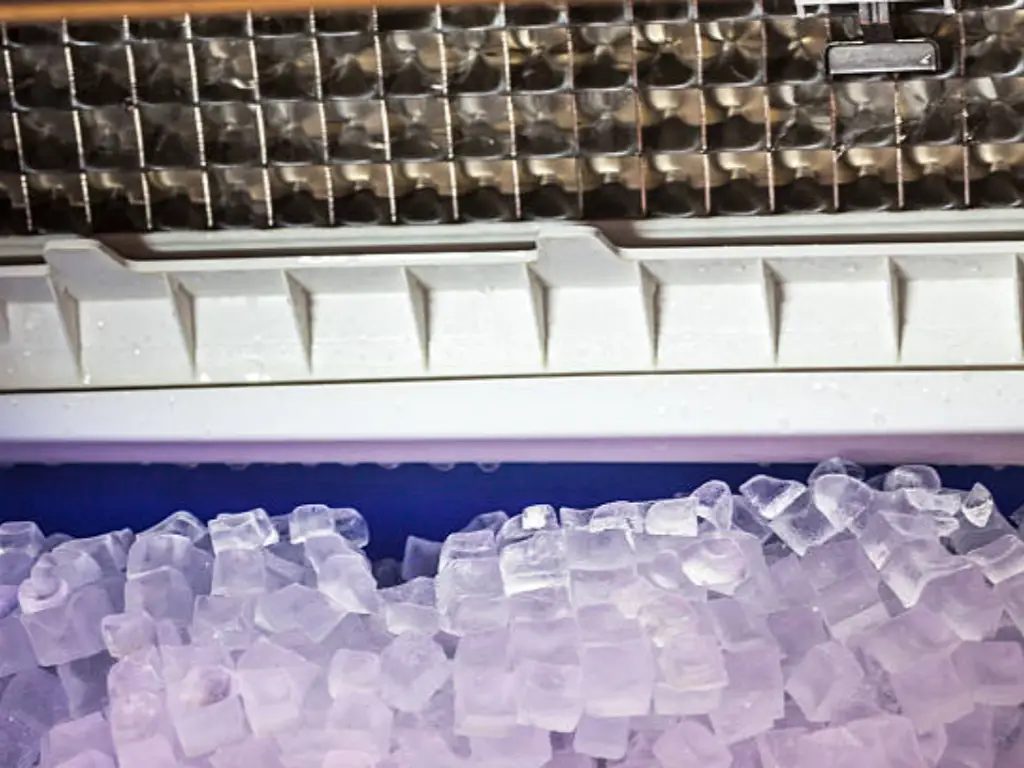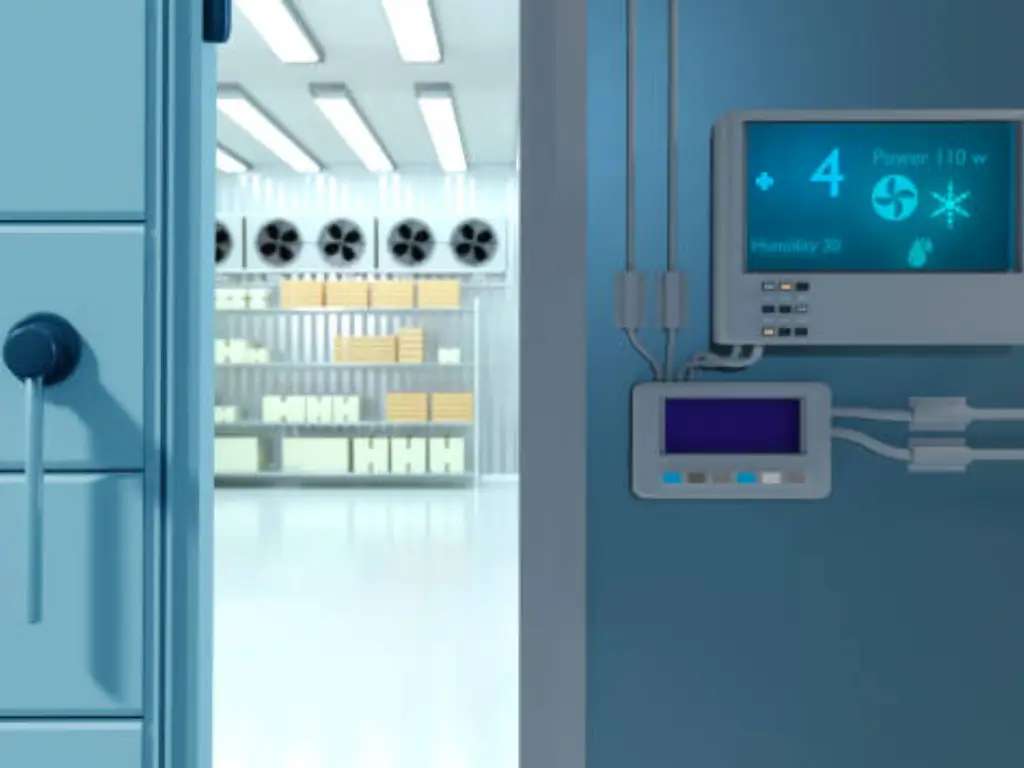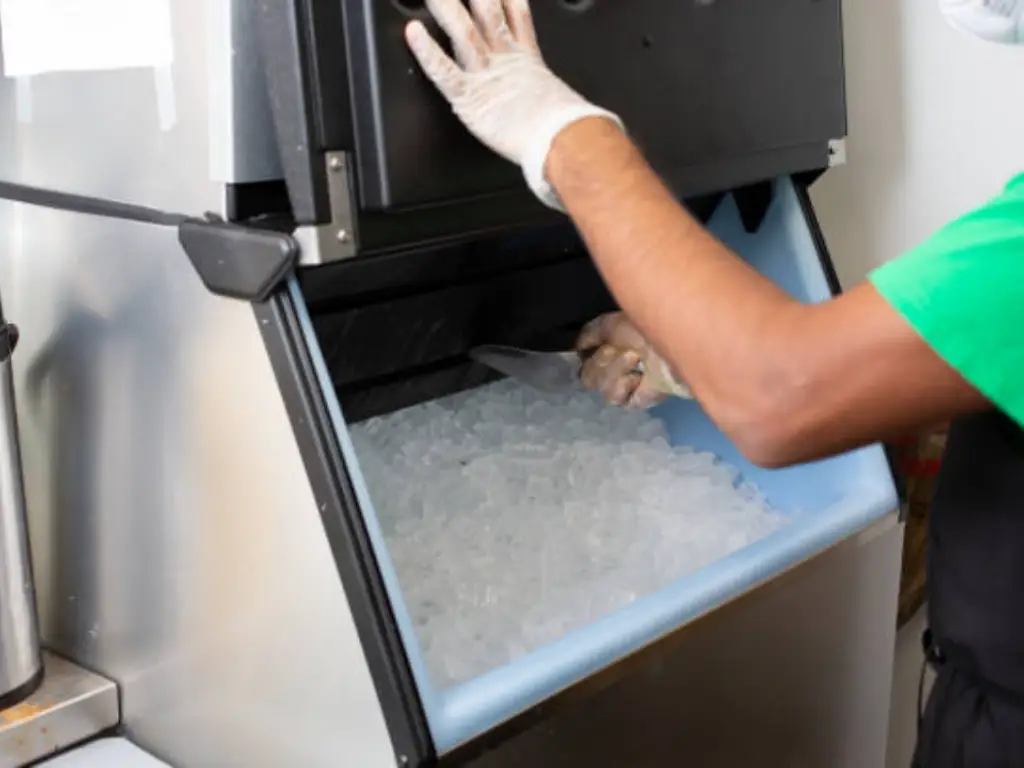Ice blocks are a universal necessity across various industries, from preserving food to supporting construction projects. The demand for efficient and reliable ice production has led to the development of commercial ice block making machines, which are designed to produce large quantities of ice blocks with minimal effort. Whether you’re in the food and beverage sector, 農業, fisheries, または建設, the right commercial block ice maker can make a huge difference in productivity and cost savings. This guide delves into the workings, types, アプリケーション, and benefits of these machines, helping you make an informed choice for your business needs.
How Commercial Ice Block Making Machines Work
To fully appreciate the value of these machines, it’s important to understand their inner workings. The production process might seem straightforward, but it involves sophisticated technology designed for precision and efficiency.
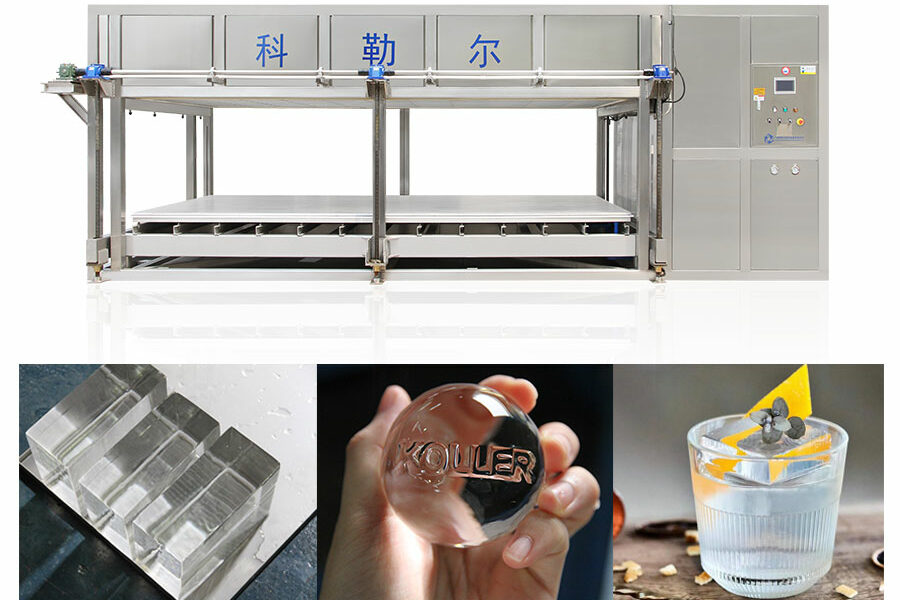
The Basic Mechanism
At its core, a commercial ice block making machine functions on refrigeration principles. Water is poured into molds, which are then subjected to freezing temperatures facilitated by a refrigerant system. This freezing cycle transforms the water into solid blocks of ice, which can vary in size depending on the machine’s specifications.
The process is a harmonious interplay between cooling systems, temperature controls, and timers. These machines are engineered to ensure that every block of ice produced is solid, consistent, and free from impurities, making them ideal for both commercial and industrial applications.
Key Components of the Machine
Each commercial ice block machine is a symphony of vital components, all working together seamlessly to produce high-quality ice.
- コンプレッサー: The compressor acts as the heart of the system, pumping refrigerant through the machine and maintaining optimal pressure levels.
- 蒸発器: This component is where the refrigerant absorbs heat, allowing the water in the molds to freeze effectively.
- コンデンサー: The condenser releases heat collected by the refrigerant, aiding the freezing cycle.
- 冷媒: Refrigerants are specialized fluids that circulate within the machine to absorb and transfer heat efficiently.
The Ice Production Cycle
The production cycle begins when water is added to the molds. The machine’s refrigeration system kicks into gear, with the refrigerant cycling through the compressor, evaporator, and condenser. Gradually, the water freezes into solid blocks. 凍結プロセスが完了したら, the machine enters the harvesting phase, where the ice blocks are extracted, ready for use or storage. This cycle is designed for efficiency, ensuring consistent results with minimal waste.
Types of Commercial Ice Block Making Machines
There isn’t a one-size-fits-all solution when it comes to these machines. They are categorized based on their production capacity and cooling technology, making it easier to find the right fit for your business.
Based on Production Capacity
- Small-Scale Machines: These compact machines are perfect for small businesses or startups. They are affordable, easy to operate, and suitable for producing limited quantities of ice blocks without compromising quality. They’re a great choice for local fish markets, small restaurants, or food vendors.
- Medium-Scale Machines: For businesses with moderate ice demands, medium-scale machines like 1 ton ice block making machine strike a balance between capacity and cost. They are versatile, capable of meeting the needs of mid-sized operations like larger food processors or agricultural setups.
- Large-Scale Machines: Designed for industrial operations, large-scale commercial block ice maker for sale can produce massive quantities of ice continuously. These are ideal for industries like fisheries, where high-volume, consistent ice supply is critical.
Based on Cooling Technology
- Air-Cooled Machines: Air-cooled machines rely on ambient air to dissipate heat from the refrigerant. They are efficient in well-ventilated environments and are easier to install as they don’t require a water supply for cooling.
- Water-Cooled Machines: Water-cooled machines, 一方で, use water to cool the refrigerant. They are more efficient in hot climates but require access to a steady water source. These machines are often preferred for industrial settings due to their superior cooling performance.
Benefits of Using a Commercial Ice Block Making Machine
Investing in an industrial ice block making machine offers numerous advantages, both operationally and economically.
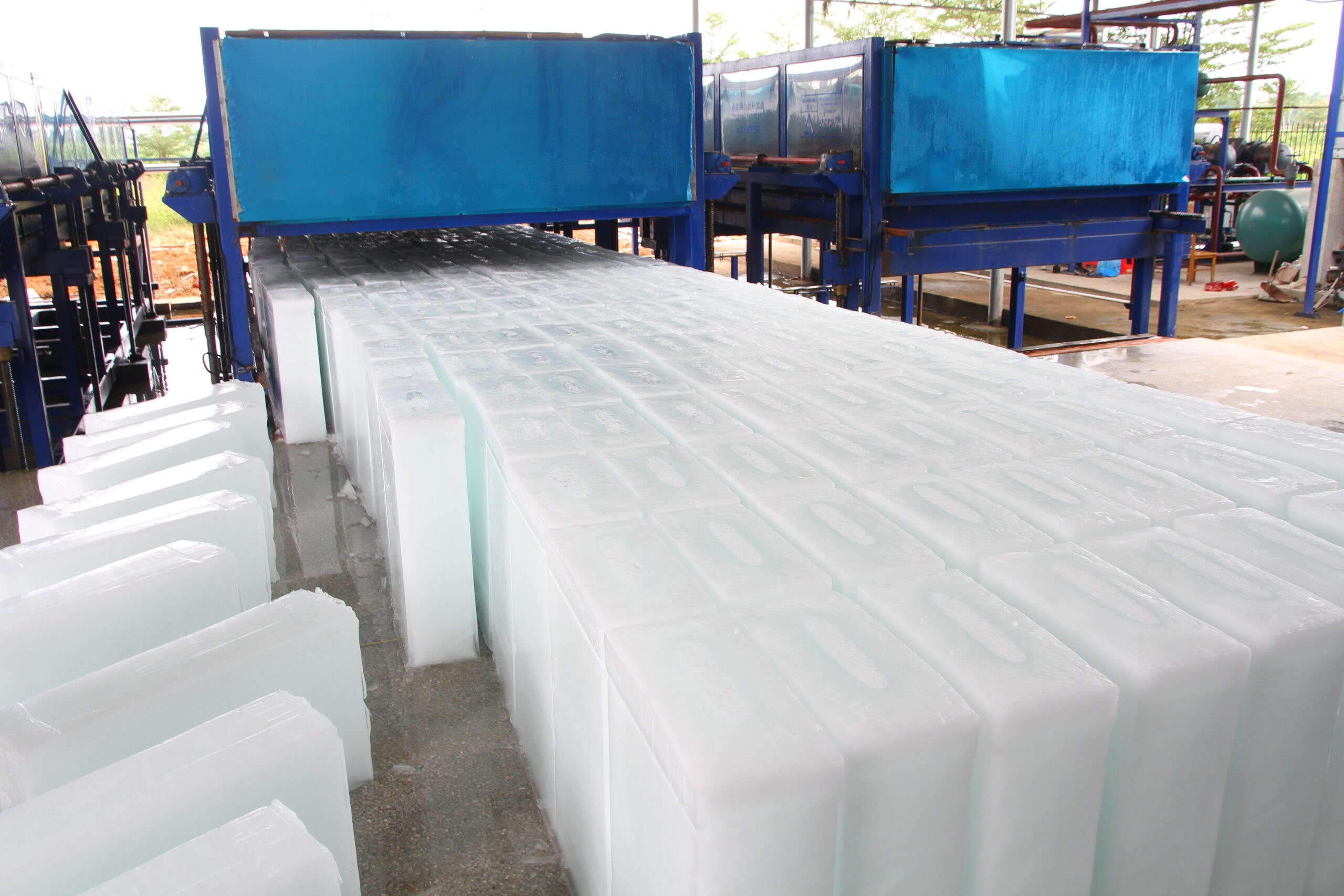
Enhanced Efficiency
Gone are the days of manually producing ice blocks. These machines automate the process, significantly reducing the time and labor required. With just a few adjustments, they can run continuously, providing a steady supply of ice blocks.
Cost-Effectiveness
While the initial investment may seem high, the long-term savings are substantial. These machines are designed to minimize energy consumption and water usage, translating into lower operating costs.
Consistent Ice Quality
Uniformity is crucial when it comes to ice blocks, especially for industries like food and beverage. These machines ensure that every block produced is of the same size, 形, and quality, meeting the highest standards.
Environmental Benefits
Modern machines often incorporate eco-friendly refrigerants and energy-efficient components, making them a greener choice. By reducing waste and emissions, they contribute to a sustainable future.
Applications of Commercial Ice Block Making Machines
The versatility of these machines is reflected in their wide range of applications across various industries.
農業
で 農業, ice blocks play an essential role in preserving perishable goods. Fresh produce such as fruits, 野菜, and dairy products is often at risk of spoilage during long-haul transportation. By packing ice blocks alongside these items, farmers and distributors can maintain optimal temperatures, ensuring the produce stays fresh until it reaches consumers. さらに, ice blocks are sometimes used in post-harvest cooling to extend the shelf life of crops, reducing waste and enhancing profitability.
Construction Uses
The construction industry might not be the first place you’d think of for ice blocks, but their role here is vital. During the curing process of concrete, temperature control is critical to ensure strength and durability. High temperatures can cause concrete to set unevenly, leading to cracks or weak spots. Ice blocks are used to lower the temperature of concrete mixtures, especially in hot climates or large-scale projects, ensuring the material cures uniformly. This process helps in achieving the desired structural integrity and prevents long-term defects.
Food and Beverage
The food and beverage industry heavily depends on ice blocks for a variety of purposes. In restaurants, バー, そして ケータリングサービス, ice blocks are used to chill drinks, keep food fresh, and enhance presentation. For outdoor events or mobile catering, large ice blocks are often used in coolers to maintain low temperatures for extended periods. Their ability to preserve the freshness of meat, シーフード, and dairy products makes them an essential resource for businesses in this sector. さらに, ice blocks are preferred for their slower melting rates compared to smaller ice cubes, providing long-lasting cooling.
Fisheries and Aquaculture
Fisheries and aquaculture industries are among the largest consumers of ice blocks. Freshly caught fish and seafood are extremely perishable and require immediate cooling to retain quality during storage and transportation. Ice blocks not only preserve the catch but also inhibit bacterial growth, ensuring that the seafood remains safe and fresh for consumers. In aquaculture, ice blocks help regulate water temperatures in breeding tanks, especially in regions with high ambient temperatures. By stabilizing water conditions, they create an environment conducive to the health and growth of aquatic species.
Medical and Pharmaceutical Sector
In the medical and pharmaceutical sectors, maintaining a cold chain is often a matter of life and death. Ice blocks are indispensable for the safe transportation of vaccines, 薬, and biological samples that are sensitive to temperature fluctuations. During global health crises, such as the distribution of vaccines, ice blocks have played a crucial role in preserving the efficacy of temperature-sensitive drugs. Laboratories and hospitals also rely on ice blocks for temporary storage during power outages or emergencies. Their role in these applications highlights their importance in safeguarding public health.
How to Operate the Ice Block Machine?
Operating an industrial ice block machine might seem intimidating, but with the right approach, it’s quite straightforward. Here’s a step-by-step guide to help you navigate the process.
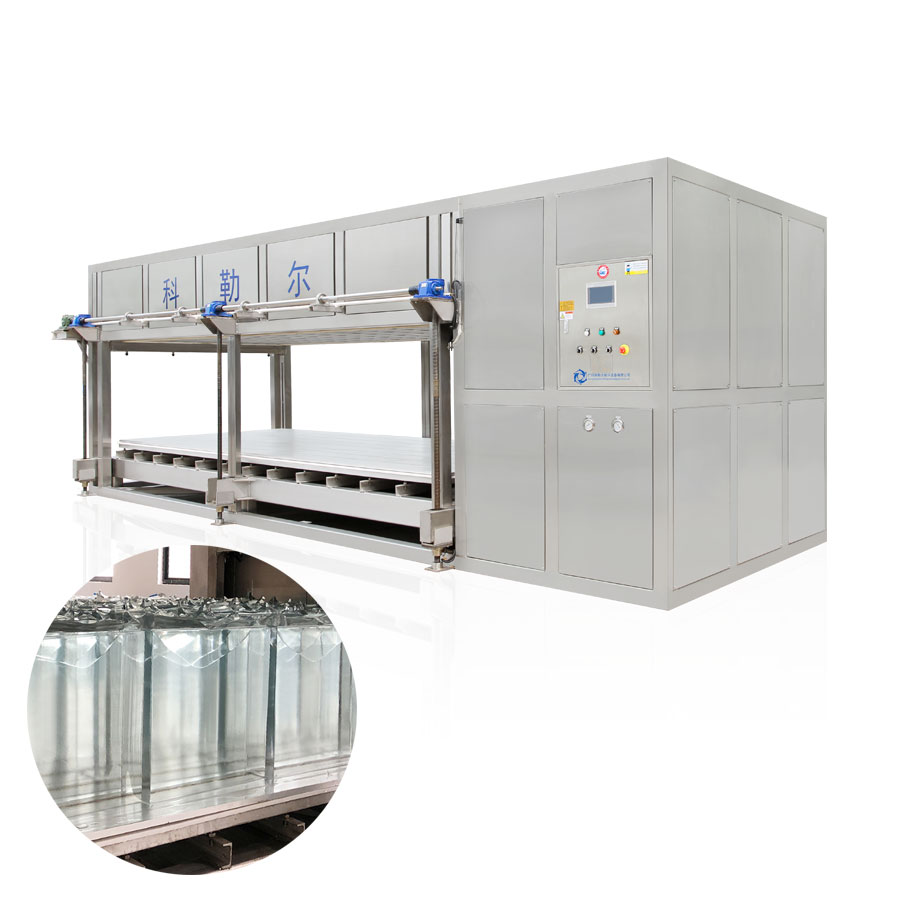
1. Setting Up the Machine
Start by positioning the machine in a well-ventilated area with access to power and water (if needed). Ensure the base is stable to avoid vibrations that could affect performance.
2. Adding Water and Refrigerant
Fill the ice molds with clean water, adhering to the manufacturer’s guidelines. Check the refrigerant levels to ensure the cooling system operates efficiently.
3. Monitoring the Ice Formation Process
During operation, monitor the temperature and timers. Most modern machines are equipped with automatic controls, but periodic checks ensure optimal performance.
4. Harvesting the Ice Blocks
Once the cycle is complete, the machine will release the ice blocks, often through a defrosting mechanism that makes extraction easy. Collect the blocks and store them in insulated containers or freezers for later use.
Maintenance Tips for Longevity
Regular maintenance is essential to keep your machine running smoothly and extend its lifespan. Follow these tips to avoid unnecessary downtime and costly repairs.
Regular Cleaning and Sanitization
Clean the ice molds and internal components regularly to prevent the buildup of bacteria or mineral deposits. Use food-safe cleaning agents to maintain hygiene.
Inspection of Components
Periodically inspect key components like the compressor, コンデンサー, and evaporator. Look for signs of wear or damage, and replace parts as needed.
Troubleshooting Common Issues
If you notice decreased efficiency or unusual noises, consult the user manual or a professional technician. Addressing minor issues early prevents larger problems from developing.
What to Look for in a Commercial Ice Block Making Machine
Selecting the right commercial block ice maker for your business isn’t just about picking the most expensive model. A range of factors comes into play to ensure the machine meets your operational needs.
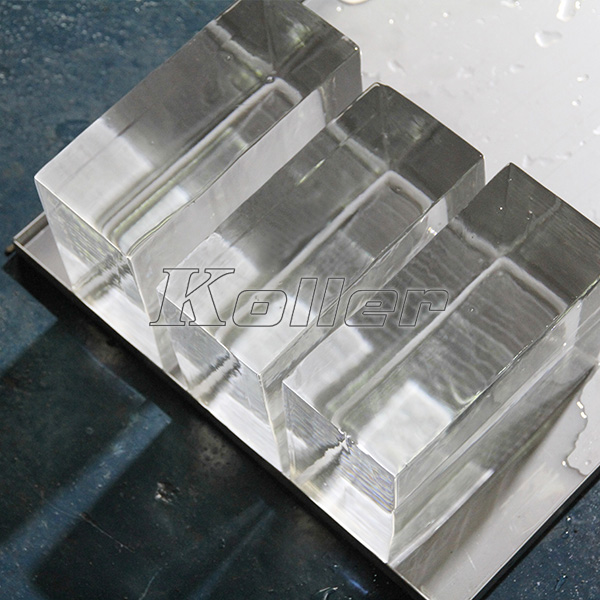
生産能力
First and foremost, consider the amount of ice your business requires daily. Machines are available in varying capacities, from small-scale units producing a few blocks at a time to industrial models capable of creating tons of ice in a single cycle. A 1-ton ice block making machine might be ideal for medium-sized operations, while larger setups may need industrial-grade solutions.
エネルギー効率
Energy consumption is a key factor, as these machines often operate continuously. Look for models that prioritize efficiency without compromising performance. Energy-efficient machines can significantly reduce operational costs over time.
Durability and Material Quality
Investing in a machine made from high-quality materials ensures it will withstand the demands of daily use. Stainless steel is a popular choice due to its resistance to rust and corrosion, which is especially crucial in humid environments.
Maintenance Requirements
Ease of maintenance can save you a lot of headaches down the line. Machines with accessible components and straightforward cleaning processes are preferable, as they reduce downtime and repair costs.
Brand and Manufacturer Reputation
Always consider the reputation of the commercial ice machine manufacturer. Trusted brands often provide better customer support, warranties, そして信頼できるパフォーマンス. When searching for commercial ice block making machines for sale, prioritize suppliers with proven track records.
結論
Commercial ice block making machines are indispensable for industries requiring consistent and high-quality ice production. From preserving perishables to supporting large-scale construction projects, these machines offer unparalleled efficiency and versatility. By understanding how they work, evaluating the types available, and considering the key factors for selection, you can confidently choose a machine that aligns with your business needs. With proper maintenance and care, your investment will pay off for years to come.
FAQs on Ice Block Making Machine
1. What is the average lifespan of a commercial ice block making machine?
Most commercial ice block machines last between 8 に 15 年, ブランドに応じて, build quality, and maintenance.
2. How much energy does a typical machine consume?
Energy consumption varies by model. あ 1-ton ice block making machine generally consumes around 10-15 kWh per day, but energy-efficient models can use less.
3. Are these machines suitable for small businesses?
Absolutely! Small-scale commercial block ice makers are designed for low-volume needs, making them perfect for startups or local operations.
4. Can the machines use renewable energy sources?
はい, some modern machines are compatible with renewable energy systems, such as solar panels, offering eco-friendly operation.
5. What is the typical production time for a batch of ice blocks?
Production time ranges from 6 に 12 時間, depending on the machine’s capacity and cooling technology. Large machines might produce ice faster due to their advanced systems.



